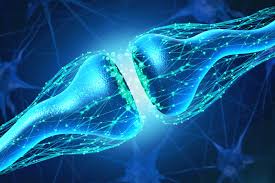
Breaking News
 The Tenpenny Files with Patrick Byrne
The Tenpenny Files with Patrick Byrne
 What Just Happened With Ron Paul Changes EVERYTHING (You're Witnessing History)
What Just Happened With Ron Paul Changes EVERYTHING (You're Witnessing History)
 Piers Morgan CLASHES with Candace Owens During On-Air Firestorm Interview:
Piers Morgan CLASHES with Candace Owens During On-Air Firestorm Interview:
 House Passes Bill to Prosecute Doctors and Parents for Sex Changes for Children...
House Passes Bill to Prosecute Doctors and Parents for Sex Changes for Children...
Top Tech News
 This tiny dev board is packed with features for ambitious makers
This tiny dev board is packed with features for ambitious makers
 Scientists Discover Gel to Regrow Tooth Enamel
Scientists Discover Gel to Regrow Tooth Enamel
 Vitamin C and Dandelion Root Killing Cancer Cells -- as Former CDC Director Calls for COVID-19...
Vitamin C and Dandelion Root Killing Cancer Cells -- as Former CDC Director Calls for COVID-19...
 Galactic Brain: US firm plans space-based data centers, power grid to challenge China
Galactic Brain: US firm plans space-based data centers, power grid to challenge China
 A microbial cleanup for glyphosate just earned a patent. Here's why that matters
A microbial cleanup for glyphosate just earned a patent. Here's why that matters
 Japan Breaks Internet Speed Record with 5 Million Times Faster Data Transfer
Japan Breaks Internet Speed Record with 5 Million Times Faster Data Transfer
 Advanced Propulsion Resources Part 1 of 2
Advanced Propulsion Resources Part 1 of 2
 PulsarFusion a forward-thinking UK aerospace company, is pushing the boundaries of space travel...
PulsarFusion a forward-thinking UK aerospace company, is pushing the boundaries of space travel...
 Dinky little laser box throws big-screen entertainment from inches away
Dinky little laser box throws big-screen entertainment from inches away
 'World's first' sodium-ion flashlight shines bright even at -40 ºF
'World's first' sodium-ion flashlight shines bright even at -40 ºF
Artificial synapses and living cells communicate using brain chemicals

Now scientists have successfully bridged the gap between organic and artificial, with biohybrid synapses that let living cells communicate with electronic systems, not with electrical signals but with neurotransmitters like dopamine.
In the brain, neurons pass signals back and forth across gaps called synapses. This connection gets stronger every time it's called upon, which is the basis for how we learn. The fact that information is processed and stored in the same part of the brain drastically speeds up recall.
That gives the organic brain a huge advantage over traditional computers, which process and store information in separate places. It makes sense then that emerging computer systems are beginning to mimic the structure of the brain, using artificial neurons and synapses.



